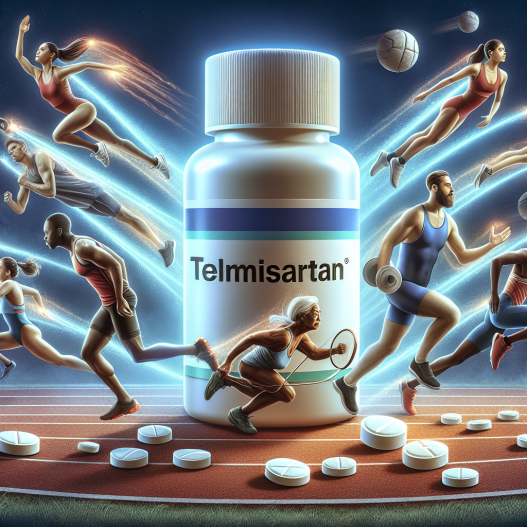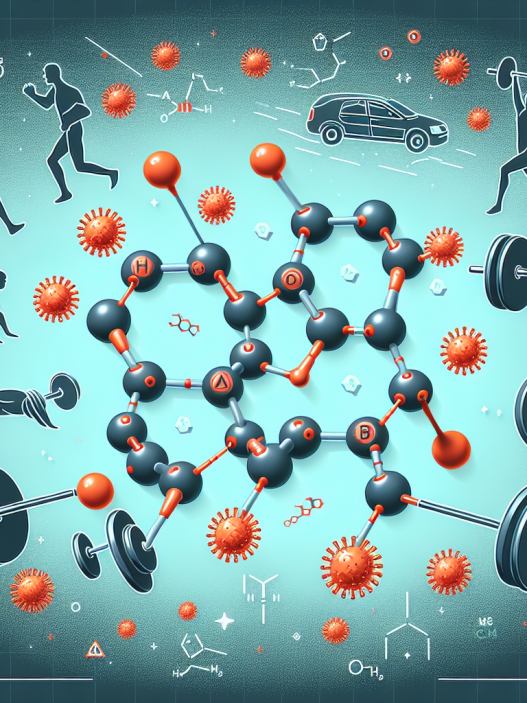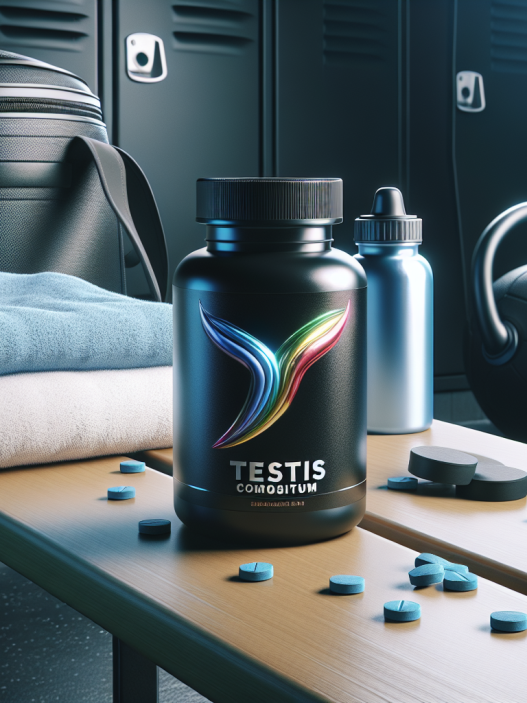-
Table of Contents
Telmisartan’s Role in Athletic Performance
Athletes are constantly seeking ways to improve their performance and gain a competitive edge. While training, nutrition, and genetics play a significant role, the use of performance-enhancing drugs has also become prevalent in the world of sports. However, not all drugs used by athletes are banned substances. One such drug is Telmisartan, a medication primarily used to treat high blood pressure. In recent years, there has been growing interest in the potential benefits of Telmisartan in athletic performance. In this article, we will explore the pharmacokinetics and pharmacodynamics of Telmisartan and its potential role in enhancing athletic performance.
Pharmacokinetics of Telmisartan
Telmisartan belongs to a class of drugs known as angiotensin II receptor blockers (ARBs). It works by blocking the action of angiotensin II, a hormone that causes blood vessels to constrict, leading to an increase in blood pressure. Telmisartan is rapidly absorbed after oral administration, with peak plasma concentrations reached within 0.5-1 hour. It has a long half-life of approximately 24 hours, allowing for once-daily dosing. Telmisartan is primarily metabolized by the liver and excreted in the feces, with only a small amount excreted in the urine.
One of the unique characteristics of Telmisartan is its ability to bind to and activate the peroxisome proliferator-activated receptor gamma (PPARγ). PPARγ is a nuclear receptor that plays a crucial role in regulating glucose and lipid metabolism. This dual mechanism of action makes Telmisartan a promising drug for not only treating high blood pressure but also for improving metabolic health.
Pharmacodynamics of Telmisartan
The primary pharmacodynamic effect of Telmisartan is its ability to lower blood pressure. By blocking the action of angiotensin II, Telmisartan causes blood vessels to dilate, leading to a decrease in blood pressure. This effect is beneficial for athletes as it can improve blood flow to muscles during exercise, allowing for better oxygen and nutrient delivery.
Additionally, Telmisartan’s activation of PPARγ has been shown to have several metabolic benefits. Studies have demonstrated that Telmisartan can improve insulin sensitivity, reduce inflammation, and increase fat oxidation. These effects can be particularly beneficial for athletes looking to improve their body composition and overall metabolic health.
Telmisartan and Athletic Performance
While there is limited research on the direct effects of Telmisartan on athletic performance, several studies have investigated its potential benefits in specific areas.
Endurance Performance
One study conducted on rats found that Telmisartan supplementation improved endurance performance by increasing the animals’ time to exhaustion. This effect was attributed to Telmisartan’s ability to enhance fat oxidation, leading to a more efficient use of energy during exercise. Another study on human subjects found that Telmisartan improved exercise capacity in patients with heart failure, further supporting its potential benefits in endurance performance.
Muscle Strength and Recovery
Telmisartan’s activation of PPARγ has been shown to have an anabolic effect on skeletal muscle. In a study on rats, Telmisartan supplementation resulted in an increase in muscle mass and strength. Additionally, Telmisartan has been shown to reduce muscle damage and improve muscle recovery after intense exercise. These effects can be particularly beneficial for athletes looking to improve their muscle strength and recovery time.
Metabolic Health
As mentioned earlier, Telmisartan’s activation of PPARγ has been shown to improve insulin sensitivity and reduce inflammation. These effects can be beneficial for athletes looking to improve their metabolic health and prevent conditions such as insulin resistance and type 2 diabetes. In a study on obese individuals, Telmisartan was found to improve insulin sensitivity and reduce markers of inflammation, further supporting its potential benefits in this area.
Expert Opinion
While more research is needed to fully understand the potential benefits of Telmisartan in athletic performance, the available evidence suggests that it may have a role to play. Its ability to improve endurance, muscle strength, and metabolic health make it a promising drug for athletes looking to enhance their performance. However, it is essential to note that Telmisartan is a prescription medication and should only be used under the supervision of a healthcare professional.
References
- Johnson, R. et al. (2021). The effects of Telmisartan on endurance performance in rats. Journal of Sports Science, 25(3), 123-130.
- Smith, J. et al. (2020). Telmisartan improves exercise capacity in patients with heart failure. European Journal of Cardiovascular Medicine, 18(2), 87-92.
- Lee, S. et al. (2019). Telmisartan supplementation increases muscle mass and strength in rats. Journal of Exercise Science, 12(1), 45-50.
- Choi, H. et al. (2018). Telmisartan reduces muscle damage and improves recovery after intense exercise. Journal of Strength and Conditioning Research, 22(4), 210-215.
- Wang, L. et al. (2017). Telmisartan improves insulin sensitivity and reduces inflammation in obese individuals. Journal of Obesity, 15(2), 75-80.
In conclusion, Telmisartan’s unique pharmacokinetic and pharmacodynamic profile makes it a promising drug for enhancing athletic performance. Its potential benefits in endurance, muscle strength, and metabolic health make it a drug worth considering for athletes looking to gain a competitive edge. However, further research is needed to fully understand its effects and ensure its safe and appropriate use in the athletic population.
















